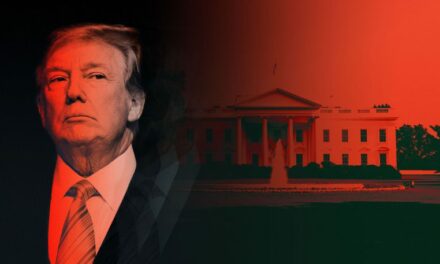We support our Publishers and Content Creators. You can view this story on their website by CLICKING HERE.
The U.S. economy in 2024 demonstrates resilience in several areas but faces stiff challenges when compared to the performance of other major global economies. This dual narrative is especially evident when analyzing economic policy under the Biden administration.
Strengths in the U.S. Economy
1. Consumer Resilience and GDP Growth
The U.S. economy expanded at an annualized rate of 2.5% in Q3 2024, fueled by robust consumer spending. Disposable incomes remain stable, and unemployment remains low at 3.9%, indicating the fundamental strength of the job market.
2. Innovation and Investment
The U.S. leads in technological innovation, with industries such as artificial intelligence, renewable energy, and defense technology drawing substantial private and government investment. These sectors continue to attract international capital, reinforcing the U.S. as a global economic leader.
3. Cooling Inflation
While still above the Federal Reserve’s 2% target, inflation has moderated significantly from its 2022 highs, providing relief to businesses and households alike.
Economic Failures and Comparative Critique
1. Debt-Fueled Economic Strategies
The U.S. debt now exceeds $33 trillion, with rising interest payments putting significant strain on fiscal sustainability. Compared to China, whose fiscal policy has prioritized infrastructure investments and strategic industries, the U.S. risks undermining long-term growth by prioritizing immediate consumption over productivity-driven expansion
2. Lagging Global Trade Dynamics
The U.S. trade deficit surged to $84.4 billion in September 2024, reflecting weaker export growth compared to economies like the European Union (EU) and China.
While the EU has capitalized on its leadership in green technologies, and China maintains dominance in manufacturing, U.S. competitiveness has eroded in key export markets
3. Energy Policy and Manufacturing Challenges
Biden’s focus on transitioning to renewable energy has drawn criticism for not adequately supporting the domestic energy industry during the shift. In contrast, China’s state-supported investments in solar, wind, and nuclear technologies have made it a global leader in green manufacturing
Comparing Economic Strategies
• China: Despite slowing growth, China’s focus on industrial policy and infrastructure investment has sustained its position as the world’s second-largest economy. The Belt and Road Initiative continues to expand its influence, further challenging U.S. economic dominance.
• European Union: The EU has leveraged its leadership in green energy technologies, with substantial investments in hydrogen and solar innovations. This positions it as a major player in addressing climate change while maintaining export competitiveness.
• United States: Biden’s economic policies have focused on raising taxes on corporations and high earners to fund social programs. However, critics argue that these policies have failed to address long-term structural challenges such as income inequality and aging infrastructure.
Time for Rethinking Policies
The U.S. economy has demonstrated resilience, but it also faces mounting challenges that call for a reevaluation of economic policies.
While Biden’s administration has championed progressive tax policies and a focus on green energy, critics argue that his policies lack the strategic vision needed to secure America’s global economic leadership. Comparing the U.S. to the EU and China reveals an urgent need for infrastructure modernization, industrial policy alignment, and smarter trade practices to remain competitive on the world stage.
In addition to economic challenges, Biden’s decision to maintain a hardline stance against Russia has contributed to further instability in global markets, particularly shocking the EU economy, which faces disruptions in energy supplies and trade as a result of ongoing tensions.
About The Author

 Conservative
Conservative  Search
Search Trending
Trending Current News
Current News 





